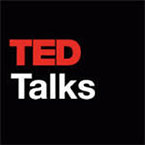More than three decades ago, two young researchers worked together in a lab in Amsterdam. One was fascinated by viruses, the other by bacteria—and so they took off in different directions. Now they have joined forces again to take Crucell’s vaccine discovery to the next level.
The young researchers were Jaap Goudsmit, now Crucell’s Chief Scientific Officer, and Jan Poolman, who joined Crucell in August as Senior Vice President Bacterial Vaccines. Jan comes to Crucell from GSK, where he worked in bacterial vaccine research for 15 years. Before that he spent 10 years at the Dutch public health institute RIVM, then a world leader in vaccine research.
Jan turned 60 recently and had been contemplating retirement when he ran into Jaap and heard that Crucell’s horizons were widening dramatically. “It was a case of right time, right place: I think I can be useful at Crucell,” says Jan.
Jaap says that’s an understatement. “There are two people in the world who know how to make innovative bacterial vaccines. And of these, Jan is the best!” He goes on to say that bacterial vaccine discovery is a quite different ball game from viral vaccine discovery. “As a virologist, I don’t understand what Jan does, and vice versa. His knowledge spectrum and his scientific network is fundamentally different from mine.”
Meeting major needs
Currently, Crucell’s only bacterial vaccine candidate is a tuberculosis vaccine based on adenovirus-vector technology. All our other pipeline programs target viral diseases. “In the past, Crucell didn’t have the money to do everything a big player can do, so we focused innovation on our capabilities: viral vaccines and antibodies, and adeno-based vaccines. I know that world. Now that we are part of Johnson & Johnson, we can afford to widen our focus.”
“Any serious vaccine company has to include bacterial vaccines in its portfolio,” says Jan, and Jaap agrees: “To realize our ambition, we need to deliver innovative vaccines against bacterial and viral diseases—and ultimately noninfectious diseases as well.”
The two are understandably tight-lipped about which new disease targets are being considered, but say that unmet medical need will be the key criterion for decision making.
Jan points to the urgency of bacterial vaccine innovation in the light of growing multi-resistance to antibiotics. “We are heading for a catastrophe—we already have deadly Staphylococcus strains we can’t treat. Without new vaccines we’ll be back where we were a century ago, before antibiotics were discovered.”
“Also, many current vaccines need to be improved,” says Jaap. “For example, the acellular pertussis vaccine used in many developed countries is not good enough—Australia’s current pertussis epidemic testifies to that. Crucell wants to make a better one.”
Understanding the enemy
“To make a good vaccine, you have to understand the way the bug causes illness. And that’s much more complicated with bacteria than viruses,” says Jaap.
Bacteria are much bigger and more diversified than viruses, and they are capable of independent life, whereas viruses have to parasitize a living organism. Bacteria can form colonies, creep into cells or invade mucous membranes. Some (like Bordetella pertussis, which causes whooping cough) produce proteins that deregulate the immune system, while others (like the meningococcal bacteria) rely on strain variability to evade our immune defenses. This complexity of behavior presents a big challenge for vaccine makers.
“With viral vaccines, antibody selection is relatively simple and you always focus on the way the virus enters the host cell,” says Jaap.
What’s more, while there are good animal models for most viral illnesses, these are lacking for many bacterial diseases. One example is cholera, which specifically infect humans. “In the absence of a good animal model, your preclinical assays have less predictive value and you need smarter logarithms,” says Jaap.
Even 35 years ago, back in that lab in Amsterdam, Jan knew that he wanted to combine his training as a biochemist—“A very practical, hands-on discipline”—with his fascination for bacteria. Jan: “In the mid-1970s, very little was known about how bacteria cause disease in the human body. I thought my background in biochemistry could be useful for studying the chemical and immunologic processes of bacterial pathogenesis, and applying this knowledge to vaccine design. I was quite sure that was where I wanted to make a contribution.”
Jan’s first task at Crucell is to build a team with bacterial know-how. He’s looking in various locations around the world. “But the heart of Crucell’s vaccine discovery will remain in Leiden,” concludes Jaap.<<




